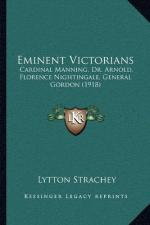|
This section contains 1,600 words (approx. 4 pages at 400 words per page) |

|
Most biographers fall short of Strachey's hermeneutical mark, perhaps because the time was not, or currently is not, as historically potent for them as it had been for him. According to Eileen Overend, Strachey's literary reputation rests traditionally on Queen Victoria (1921), and his general popularity is due to Eminent Victorians (1918). Strachey became secure in his person and art so that, says Overend, "the distancing irony" of his early Victorian portraits mellowed into "sheer warmth" by 1928, when Elizabeth and Essex appeared. Other biographers, however, failed then as they may fail now to find such a secure place within themselves and within their art. The problem is that biographers are prone to stereotyping. Henry Murray describes a parallel situation in psychology. What he calls "trait psychology" is to psychology as stereotyping is to biography: says Murray,
According to my prejudice, trait psychology is overconcerned with recurrences, with consistency, with...
|
This section contains 1,600 words (approx. 4 pages at 400 words per page) |

|




